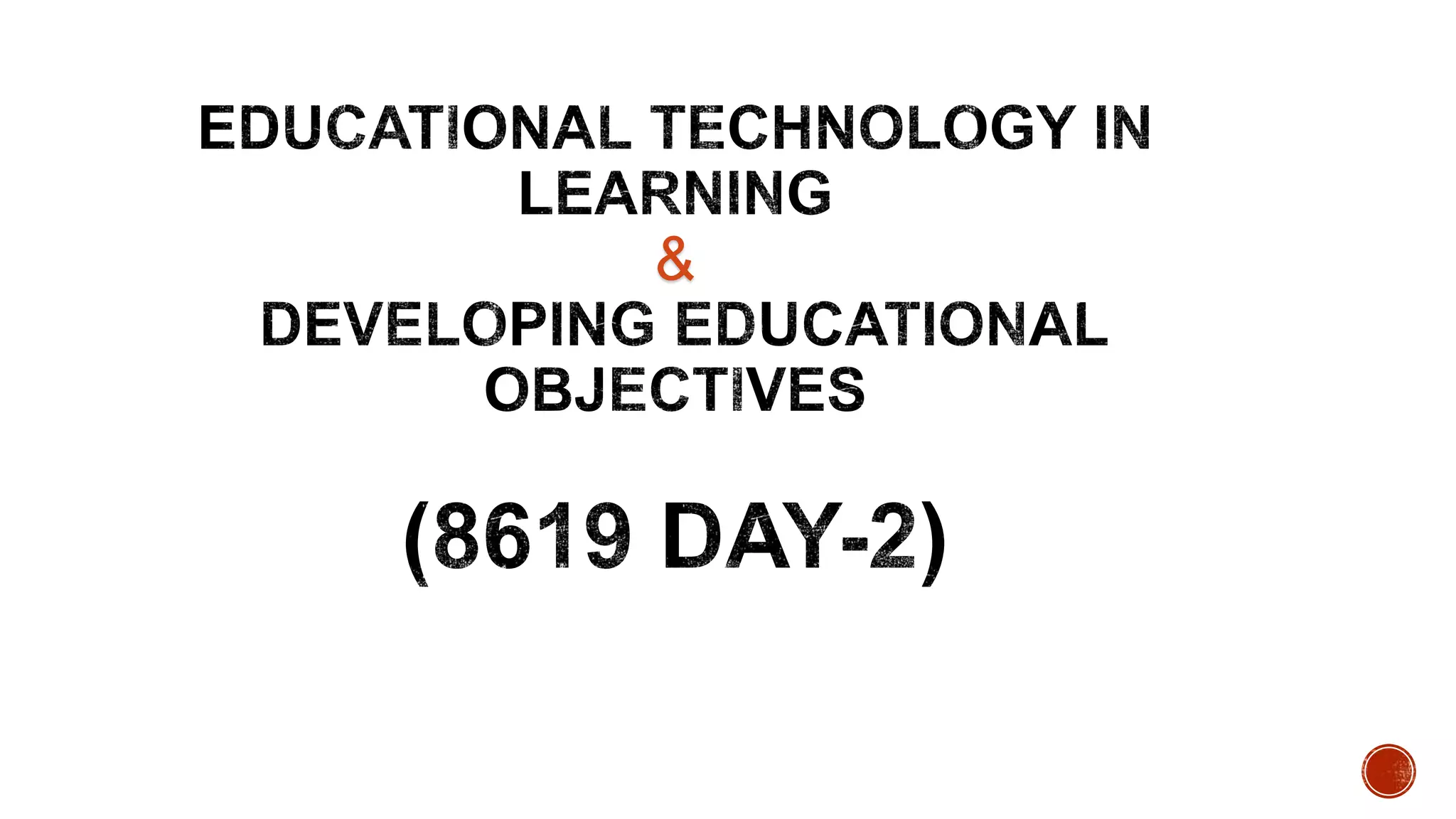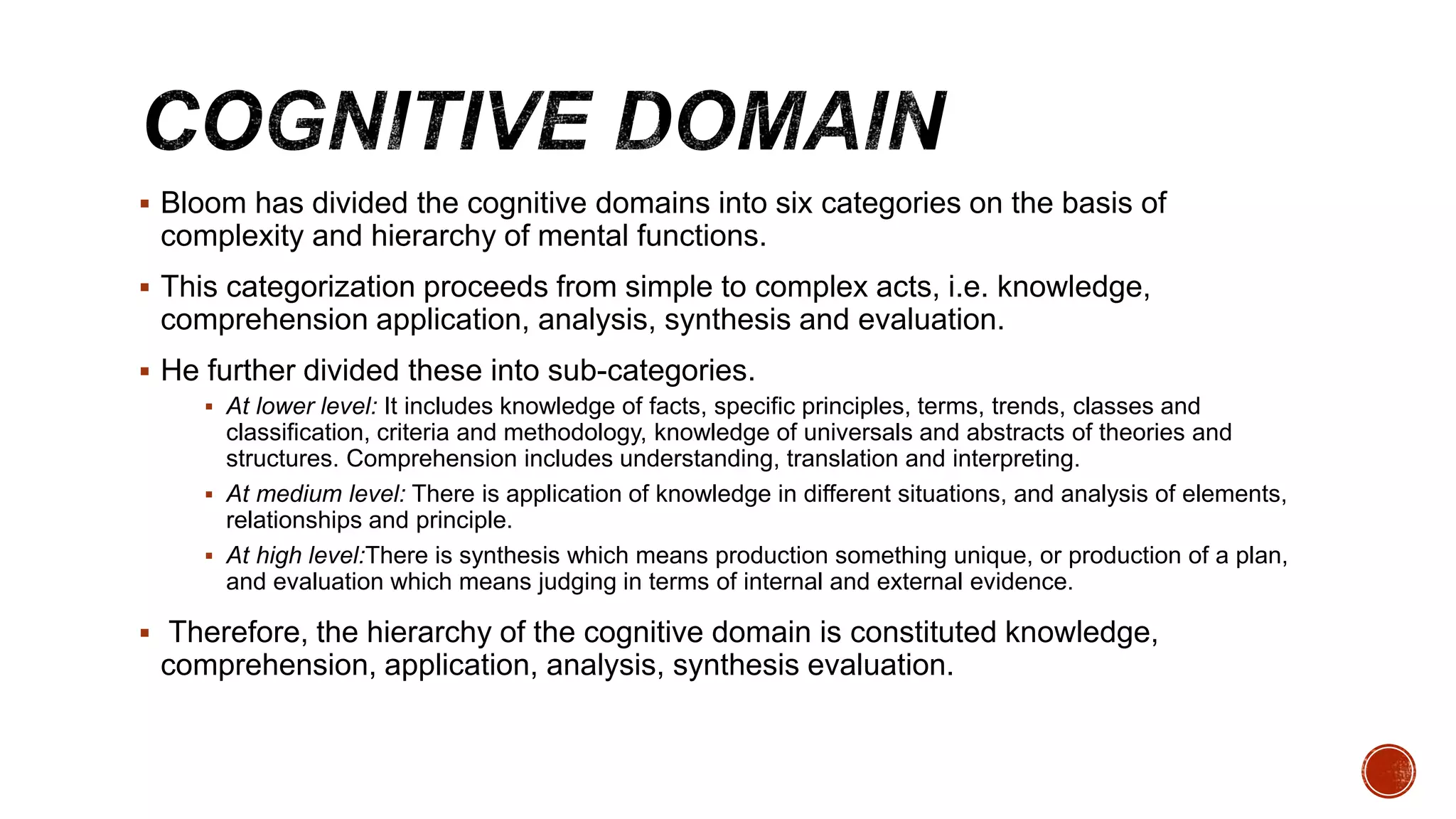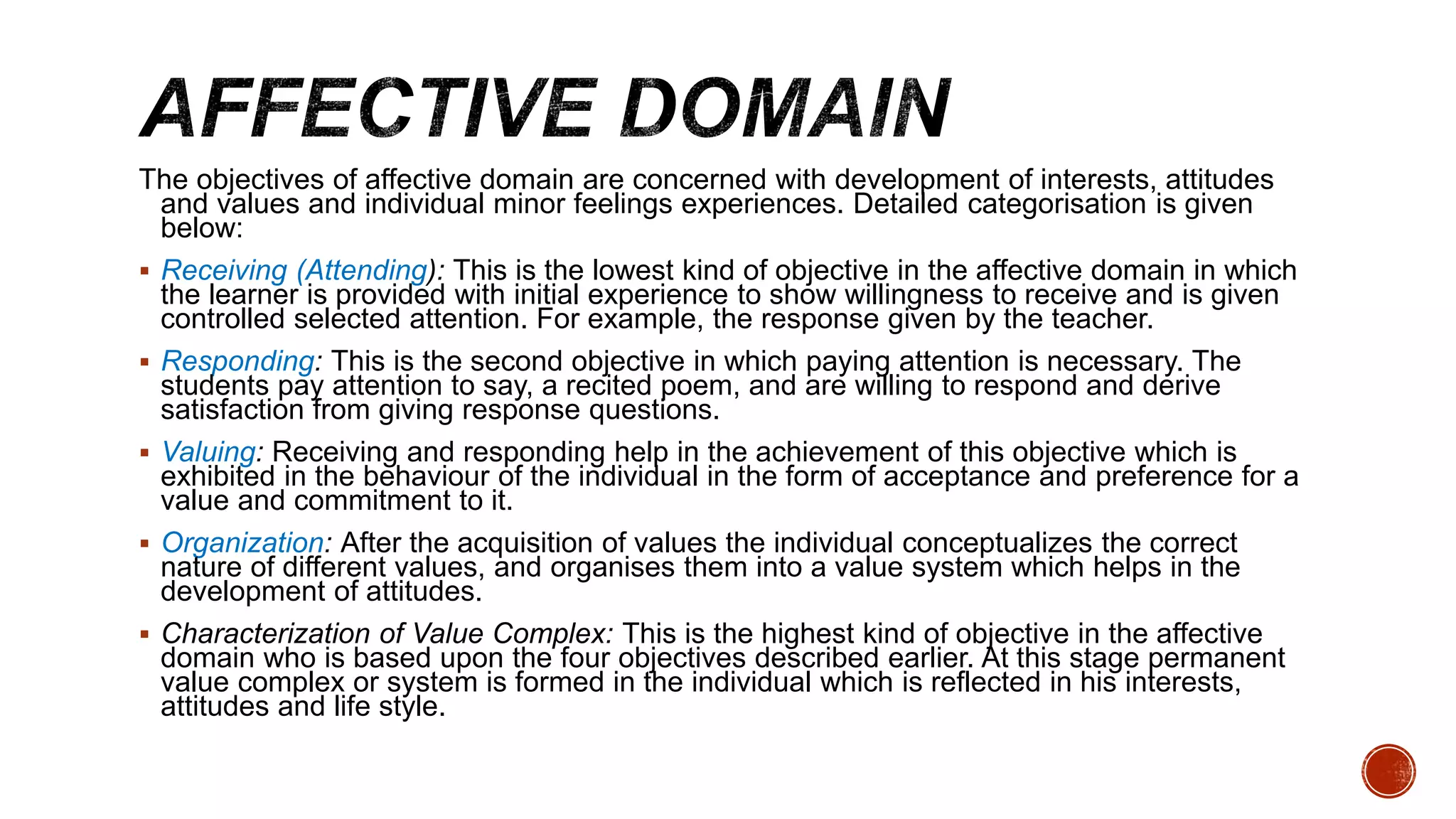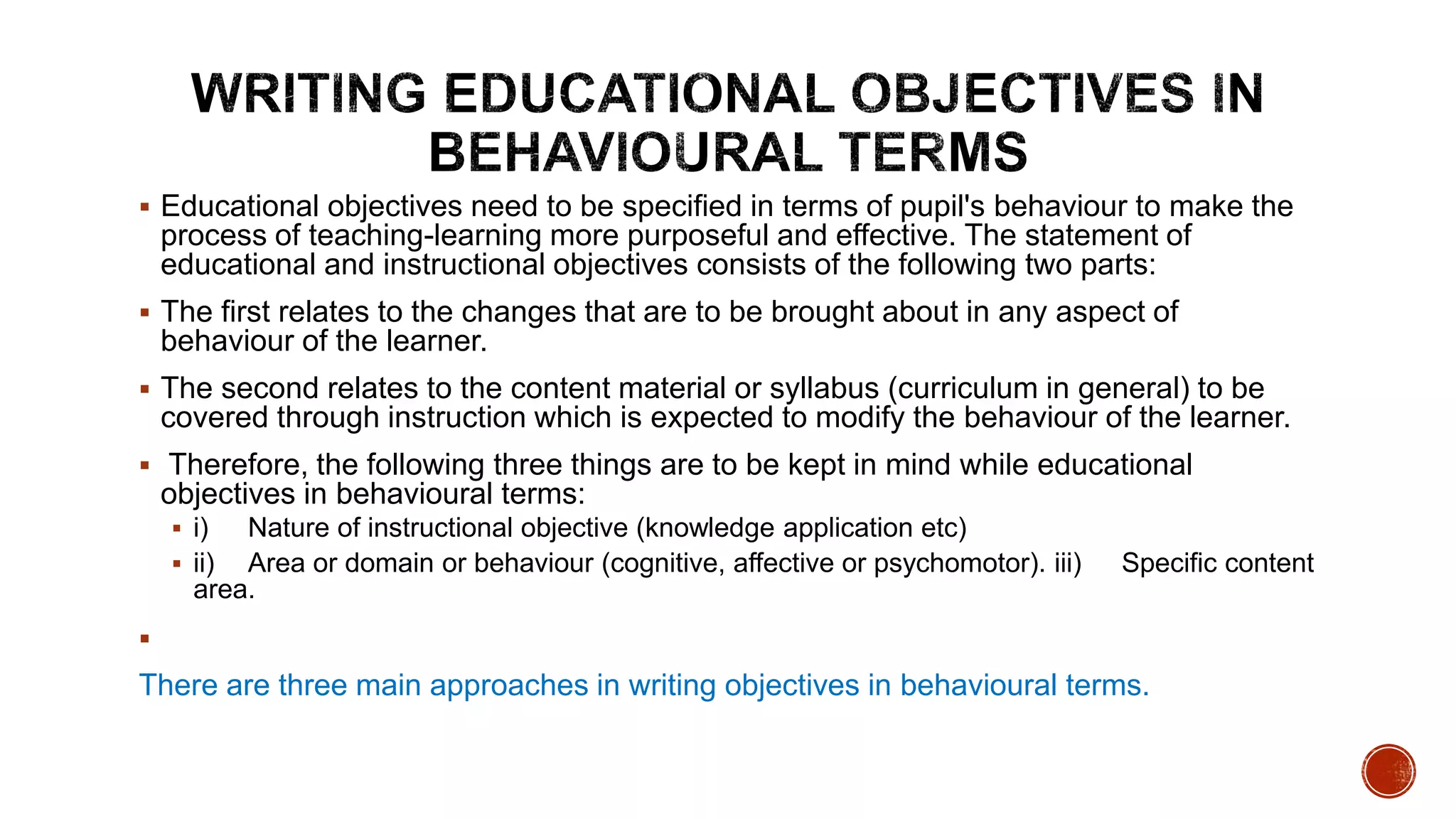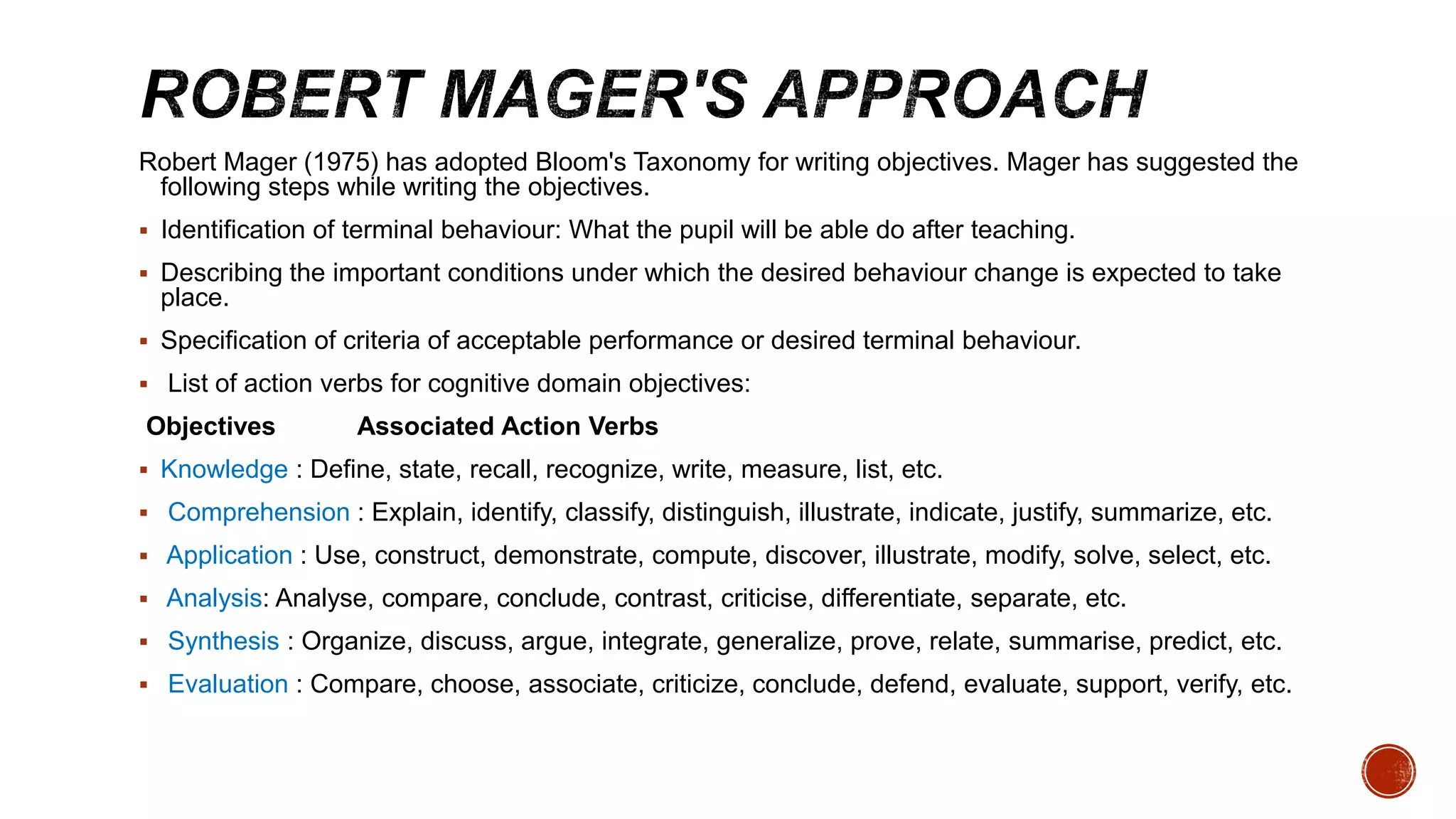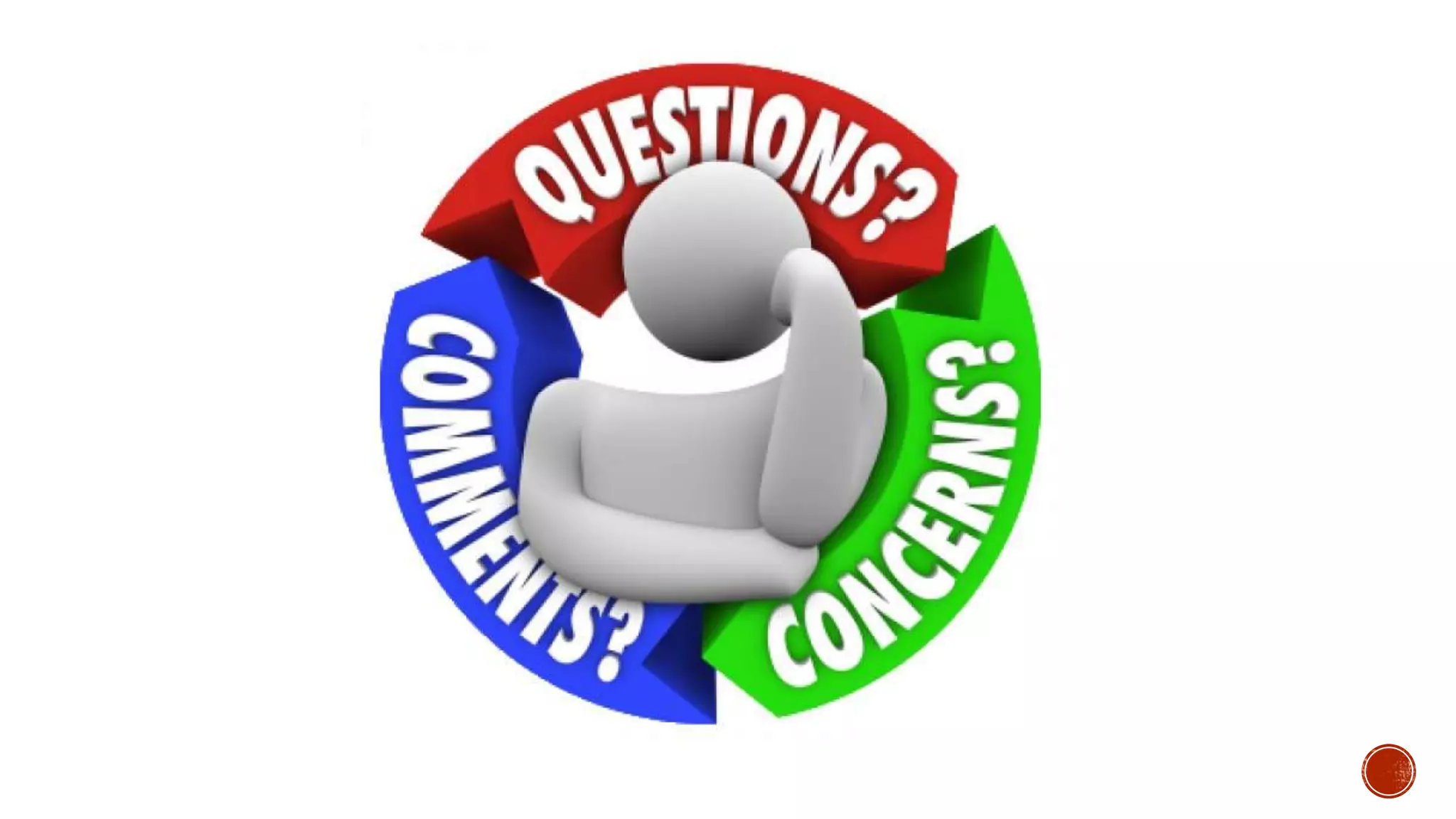The document discusses educational objectives and their importance in the teaching-learning process. It defines aims, goals, and objectives, and explains that objectives are more specific statements of educational intention compared to aims and goals. Objectives should be stated using observable and measurable verbs to describe the intended pupil behavior. Bloom's Taxonomy is discussed as a framework for categorizing educational objectives into cognitive, affective, and psychomotor domains. The cognitive domain includes objectives related to knowledge, comprehension, application, analysis, synthesis and evaluation. The affective domain covers objectives related to developing interests, attitudes and values. And the psychomotor domain involves objectives focused on developing physical skills. Writing clear, specific, and measurable objectives is important for organizing instruction
